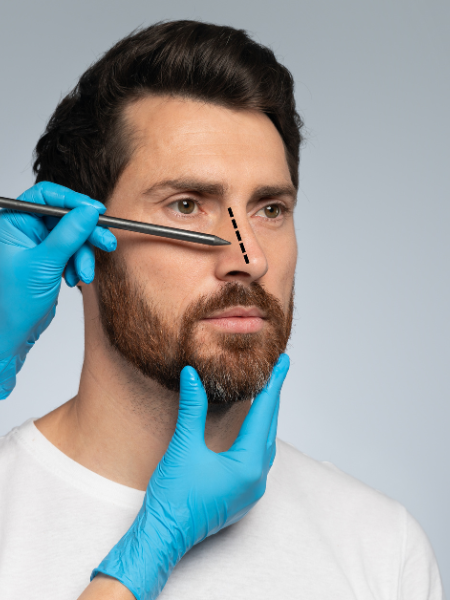
Many people dream of having a perfectly sculpted nose that complements their facial features and enhances their overall appearance. Rhinoplasty, also known as a nose job, is a cosmetic surgery procedure that can reshape the nose to achieve aesthetic and functional goals.
Whether you’re considering rhinoplasty for cosmetic reasons, to improve breathing difficulties, or to correct a previous injury, understanding the different surgical techniques available is necessary. We’ll explore the two primary rhinoplasty approaches: open rhinoplasty and closed rhinoplasty.
Rhinoplasty is a versatile surgical procedure that can address a wide range of nasal concerns. It can be performed for purely cosmetic reasons, such as refining the size, shape, or tip of the nose. Rhinoplasty can also be functional, aiming to improve breathing problems caused by structural deformities within the nose. Additionally, it can be used to correct injuries or birth defects that affect the nose’s appearance or function.
Choosing the right rhinoplasty technique depends on your individual needs and desired outcomes. A consultation with a qualified rhinoplasty surgeon in Beverly Hills, like the experienced professionals at Park Facial Plastics, can help you determine which approach is best suited for you.
Open rhinoplasty involves a more comprehensive surgical approach that gives the surgeon greater visibility of the nasal structures. During this procedure, an incision is made on the columella, the small strip of tissue separating the nostrils. This incision lets the surgeon lift the skin and expose the underlying nasal bones, cartilage, and tissues. The surgeon can then meticulously reshape these structures to achieve the desired aesthetic and functional results. Once the sculpting is complete, the skin is redraped and meticulously sutured to create a natural-looking nose.
Open rhinoplasty offers several advantages, particularly for complex cases. The increased visibility allows for more precise and detailed sculpting of the nose. This makes open rhinoplasty the preferred technique for:
While open rhinoplasty offers greater precision, it also comes with some drawbacks:
Closed rhinoplasty utilizes a more discreet approach, with all incisions made entirely within the nostrils. This technique offers a shorter recovery time and potentially less noticeable scarring. During closed rhinoplasty, the surgeon manipulates the nasal structures through these internal incisions. While closed rhinoplasty requires a high degree of skill and experience, it can be effective for achieving desired outcomes in certain cases.
Closed rhinoplasty is a suitable option for individuals seeking:
The limitations of closed rhinoplasty lie in the restricted visibility for the surgeon. This can make it less suitable for:
Also Read: The Essential Guide to Rhinoplasty: What Every Patient Should Know
Both open and closed aim to reshape the nose, but they differ significantly in their approach.
Here’s a table summarizing the key considerations:
| Factor | Open Rhinoplasty | Closed Rhinoplasty |
| Complexity | Ideal for complex cases | Best for simpler adjustments |
| Scarring | Minimal external scar on the columella | No visible scars |
| Recovery Time | Longer recovery period | Shorter healing time |
| Precision | Offers more detailed reshaping | Relies on surgeon’s skill for precision in limited visibility |
| Suitability | Well-suited for complex cases, revisions, and major nasal concerns | Ideal for minor refinements and straightforward corrections |
Also Read: Open vs. Closed Rhinoplasty: Which is Better?
The choice between open and closed rhinoplasty depends on several factors, including:

Remember that the surgeon’s skill and experience significantly influence the outcome of any rhinoplasty procedure, regardless of the technique used.
Recovery after rhinoplasty varies depending on the technique used and the extent of the procedure.
Tips for minimizing discomfort and speeding up recovery:
Rhinoplasty is a significant surgical procedure that requires careful consideration. Finding a rhinoplasty surgeon near me can make a big difference. Understanding the differences between open and closed rhinoplasty empowers you to make an informed decision about the best approach for your individual needs.
Ultimately, the key to achieving the “perfect nose” lies in choosing a qualified and experienced rhinoplasty surgeon in Beverly Hills, like the team at Park Facial Plastics, who can tailor the procedure to your unique goals and expectations.
Contact Park Facial Plastics today!